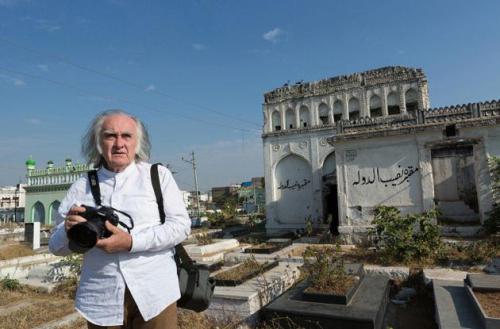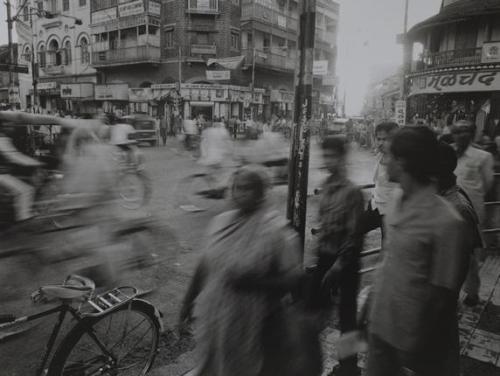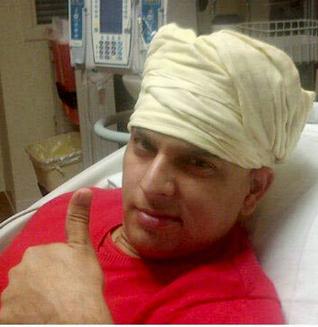Ratnakar Sadaysula writes about the history of Andhra Pradesh, and how the foundations of the Telangana movement were laid.

Honestly speaking, it was quite a tough task for me, to write about the formation of Telangana – and the bifurcation of Andhra Pradesh – without being emotionally affected. It was, after all, a place I called home. Tirupati in Rayalaseema was where I was born, Visakhapatnam in Coastal Andhra was where I grew up, studied, and got married, and Hyderabad in Telangana is where I am settled now.
In a sense, I belonged to all three regions. I had relatives from Telangana, from Seema region and of course from Coastal Andhra. But then I never saw them as being from Telangana or Seema or Kosta; for me they were just my relatives, period. It was the same at engineering college. My classmates came from all parts of the state, but we never really saw ourselves as being from Telangana or Seema or Coastal Andhra. Yes, we used to often rib and joke about where we came from, but at end of the day, we were all basically Telugu people.
When the bifurcation finally happened, it was as if a part of me was lost somewhere, a sort of confused identity. Until then, I could tell people I was from Andhra Pradesh. But now, where exactly do I say I am from? Do I belong to Coastal Andhra since Vizag is my hometown? Do I belong to Telangana since I live in Hyderabad? Or am I from Rayalaseema, since I was born in Tirupati?
Of course, apart from the “are you from Seemandhra or Telangana?” question, people also asked me, “Why Telangana state, what was the need for it to be formed?”
It is not easy to cover the entire Telangana-Andhra issue in a single article, as it has multiple dimensions, social, political, economic and historical. So, this is an attempt to explain it to people outside Andhra Pradesh, who wonder what the fuss is all about.
A brief history
The name Telangana is believed to have been derived from the word Trilinga Desa, the ancient name for Andhra Pradesh, so called because it is believed that it was flanked by three ancient Shiva Temples at Srisailam, Kaleswaram and Draksharama. A more historical explanation is that during the reign of the Nizams, the region was called Telugu Angana (where Telugu was spoken) to differentiate it from the Marathi speaking areas of their kingdom.
In historical times, the region was one of the 16 early janapadas, and Kotilingala in Karimnagar district was the main city. The region between the Krishna and the Godavari rivers was under the reign of the Satavahanas for close to 400 years from 230 BC to 220 CE. After a series of dynasties like Vakataka, Vishnu Kundina, Chalukya, Rashtrakuta and the Western Chalukyas, the region experienced a golden age during the Kakatiya Empire. From 1083 to 1203 CE, the Kakatiyas established a huge empire here, that at its peak stretched from the Godavari delta in the east to Raichur (Karnataka) in the west, and from Bastar (now in Chattisgarh) in the north to Srisailam in the south. With their capital at Warangal, the Kakatiyas built outstanding monuments and temples, and were known for their patronage of literature. With the attack by Allaudin Khilji’s general, Malik Kafur, in 1309, and the defeat of Prataparudra at the hands of Mohammad bin Tughlaq’s forces in 1310, the Kakatiya Empire fell into decline.
For some time, the region was under the Delhi Sultanate, and later the Bahmani Sultanate, before Quli Qutub Shah established the Qutub Shahi dynasty with its capital at Golkonda (near Hyderabad). In 1687, Golkonda fell to Aurangzeb after a year-long siege, and a bloody battle.
Qamaruddin Khan was appointed Viceroy of Deccan in 1712, and in 1724, he established his independence, taking the name Asif Jah and also starting the Asif Jahi dynasty. That dynasty was also called the Asif Jahi Nizams after the title Nizam-ul-Mulk (Administrator of the Realm), conferred on Asif Jah earlier. They were more popularly known as the Nizams of Hyderabad, when the city became the capital of the empire in 1769.
When the Nizam had to sign a subsidiary alliance with the British in 1799, he lost control over the state’s defence and external affairs. The Nizam also had to cede the Coastal Andhra and Rayalaseema regions of his kingdom to the British, as he could not pay monetarily for the assistance they rendered in his wars against Tipu Sultan. Coastal and Rayalaseema became part of the British Presidency of Madras under the names Circar and Ceded, while Telangana effectively became part of the princely state of Hyderabad.
For a long time, the Nizam of Hyderabad led a privileged and charmed life. He was one of the world’s richest men of his time, and lived opulently while the ordinary masses suffered in dire poverty and oppression.
During the Nizam’s rule, the rural areas were effectively controlled by what were called the Samsthanams, a group of villages that were in turn ruled by feudal lords known as Doras, mostly hailing from the Reddy and Velama community. These local Doras ran a brutal and oppressive reign, mercilessly extracting taxes from the hapless peasantry, and keeping the Nizam happy with their tribute. The Nizam had little or no control over the Doras, who were the masters of all they surveyed.
It was under such oppressive circumstances that the Telangana Rebellion began, when peasants from the backward castes and the rural poor rose against the Doras and were supported by communist leaders. The communist-led agitation started in 1946 and succeeded in liberating many villages.
Thus, the Telangana revolt, which was basically started to secure a better deal for the peasants, soon became a full-fledged struggle against the Nizam himself.
The Nizam retaliated by unleashing his private army, the Razakars, on the peasants. This army inflicted horrible atrocities on them. Villages were burnt, Hindus and moderate Muslims who did not agree with the Razakars’ extremist ideology were massacred, women were kidnapped and raped. The Razakars were the Nizam’s own storm troopers, attacking both, the peasants as well as those who were in favour of merging the Hyderabad State with the Indian Union.
The last Nizam of Hyderabad, Osman Ali Khan, who wanted to establish an independent Muslim state in India, refused to join the Indian Union despite repeated requests from Jawaharlal Nehru and Sardar Patel. Left with no option, Sardar Patel, sent in the military to annex Hyderabad in September 1948 under Operation Polo. The Nizam’s army was no match for the Indian Army, and in just five days, they were totally routed. The Nizam surrendered to Sardar Patel, and on 17th September, 1948, Operation Polo ended with Hyderabad State acceding to the Indian Union. By 1951, the leftist backed Telangana rebellion too was put down by the Indian Union.
Formation of Andhra Pradesh
At the same time, down south in the then Madras State, another rebellion of sorts was brewing too, albeit of a more peaceful nature. Potti Sreeramulu, a freedom fighter, hailing from Nellore district, led the agitation to carve out a separate state for the Telugu speaking people of that state. The prevailing feeling was that Telugu-speaking people in Madras State would be discriminated against on basis of language, and also not get proper representation in government jobs.
Sreeramulu demanded a state exclusively for the Telugu speaking people of Madras State, who resided mostly in the Circars and Ceded areas. A devout Gandhian, Sreeramulu went on a fast for his demand, and gave it up when Prime Minister Jawaharlal Nehru assured him the matter would be looked into. However with no progress on the issue, Sreeramulu went on fast again from October 1952, and while the Andhra Pradesh Congress Committee disapproved of it, the fast began to gradually catch the public’s attention.
Strikes and demonstrations broke out throughout the Telugu speaking regions, supporting Sreeramulu and demanding a new state. With the government of the day still dilly-dallying over the issue, Sreeramulu continued his fast, and passed away in the early hours of December 16, 1952.
Sreeramulu’s death was the spark needed to light the fire, and the protests became much more strident. Riots broke out in Chennai, there were violent protests from Visakhapatnam to Nellore and Rajahmundry to Guntur, there was police firing in Vijayawada and Anakapalle. Faced with no other option, Nehru announced the formation of a separate state for the Telugu people on December 19, 1952, and the central government appointed the Wanchoo committee to look into the matter. The Andhra State act was passed by Parliament in September, 1953.
The new Andhra state thus came into being on October 1, 1953, comprising seven districts of the Coastal region (Nellore, Srikakulam, Visakhapatnam, East and West Godavari, Guntur, and Krishna) and four districts of the Rayalaseema region (Chittoor, Kadapa, Anantpur and Kurnool). As per the Sribagh Agreement between Coastal Andhra and Rayalaseema, Kurnool became the capital of Andhra State, with Tanguturi Prakasam Pantulu as the first chief minister. However when Prakasam had to resign, after strident opposition from Communist leaders, Bezawada Gopal Reddy, became the next chief minister.
While Kurnool was the capital of Andhra State, it faced major issues due to lack of proper infrastructure. Government officials had to literally camp in tents, and the state government faced such a major crunch of funds, it couldn’t even pay salaries.
The States Reorganization Committee (SRC), which had Fazal Ali, KM Panniker and HN Kunzru among others, recommended the formation of Visalanadhra, which would merge the Telugu speaking areas of the existing Hyderabad State with Andhra State. The recommendation was made on the basis that having Hyderabad as a permanent capital would be more suited for Visalandhra, while also giving access to mineral resources, and the large Godavari-Krishna basin under unified control.
The Committee also noted the apprehensions of the people of Telangana, one of whose main factors was that people from the Coastal Andhra districts would dominate in employment owing to the better educational opportunities they had. Barring Hyderabad, education was not developed well in Telangana, and unlike the Rajahs and zamindars of Coastal Andhra, who set up educational institutions, the Doras in Telangana were more interested in perpetuating their brutal, feudal rule.
One more factor was that while Andhra State suffered from a serious cash crunch, Telangana on the other hand had a surplus, owing to Hyderabad, and of course a higher collection of land revenue. There was fear that unification could see Telangana facing loss in revenue, as it would have to be distributed across the state now.
Gentleman’s Agreement
The SRC had stated that Telangana could not remain a separate state on its own, and that it could unify with the existing Andhra State after the 1961 general elections provided there was a two-third majority backing the proposal if a referendum was to be conducted.
Burgula Ramakrishna Rao, the first chief minister of Hyderabad State, opposed the merger, saying only Leftist parties were supporting it for their own political calculations. He stated that a majority of the people in Telangana had apprehensions over the merger, and the assembly rulings did not accurately reflect the people’s views.
In between there occurred the Mulkhi Agitation in Telangana in 1952, led by students against non-locals taking jobs, with slogans of “Ghair Mulki, go back!”. Finally, on December 3, 1955, when the assembly voted, 147 of the 174 MLAs in Hyderabad voted on the issue of merger. 103 MLAs, including those from the Marathi and Kannada areas of Hyderabad State voted in favor, while 29 opposed, and 16 were neutral. Among those MLAs from Telangana, 59 supported the merger while only 25 voted against it. If one looks at the figures closely, out of the 94 MLAs from Telangana, 36 were Leftists, 40 were from the Congress, and the remaining were from the Socialist party and independents. So the proposal to merge Hyderabad State with Andhra State, had more support from the communists than the Congress rulers.
It was then that the Gentleman’s Agreement was signed between the leaders of Hyderabad State and Andhra State, to address the concerns of the leaders opposed to the merger and which eventually led to the formation of Andhra Pradesh in 1956.
While it is not possible to list out all the features of the Gentleman’s Agreement, here are some of the key issues it covered:
* A Regional Standing Committee for Telangana would be set up, which would look into the issues of the region, consisting of MLAs from there
* Any advice from this Regional Standing Committee, would be accepted by the government and the legislature, and in case of any difference, the Governor would have a say
* The cadre for government jobs and services in Telangana would be reserved for those who satisfied the domicile requirements, which was any person residing in Telangana for the last 12 years
* Students from Telangana would get preference in educational institutions there, even in professional colleges.
* The cabinet would be in a 60-40 ratio, with 60% of ministers from Andhra, and 40% from Telangana. And if the chief minister was from Andhra, the Deputy CM would be from Telangana, and vice versa.
Bezawada Gopal Reddy, the chief minister of Andhra State and Burgula Ramakrishna Rao, chief minister of Hyderabad State, were signatories to this agreement. The others included Neelam Sanjeeva Reddy, Gouthu Latchanna and Alluri Satyanarayana Raju from Andhra and KV Ranga Reddy, M Chenna Reddy and JV Narsing Rao from Telangana region. The agreement finally led to formation of Andhra Pradesh on November 1, 1956.
This article is basically to give a background of the formation of Andhra Pradesh, and of the historical roots of the demand for Telangana. In my next article, I will look into the Telangana and Jai Andhra movements, which broke out in 1969 and 1972 respectively, and how they laid the genesis for the Telangana movement we witnessed later on.
Ratnakar Sadasyula is an IT professional who writes code for a living, and writes during his time off to keep his sanity intact. A movie maniac and a music lover, he is a bibliophile with a love for history, the world around us and the Mahabharat.
source: http://www.dnaindia.com / DNA / Home> Analysis / by Ratnakar Sadasyula / Agency:DNA / Tuesday – March 04th, 2014





